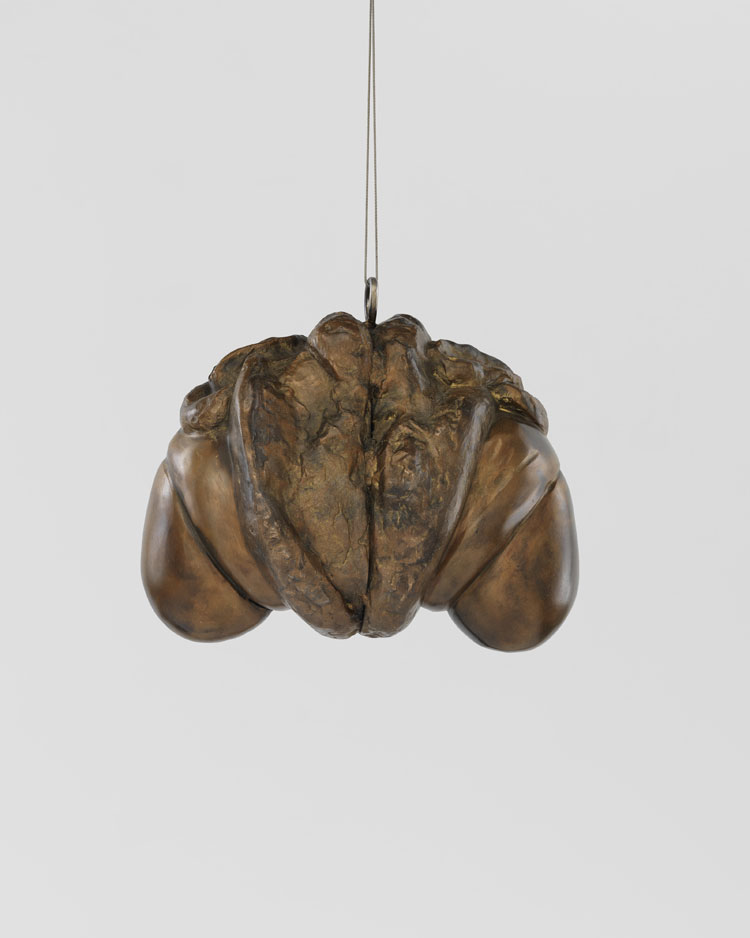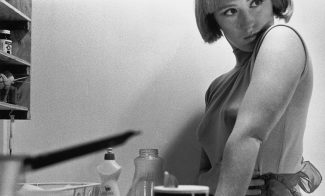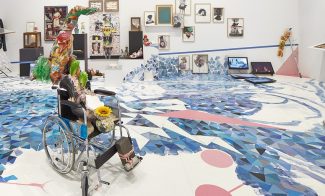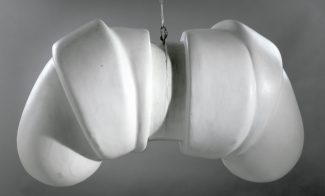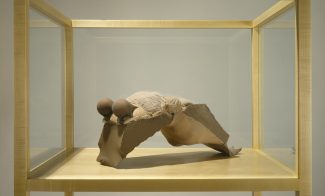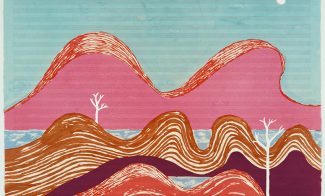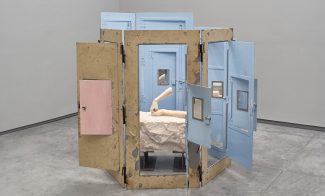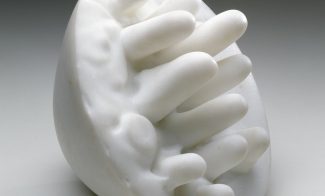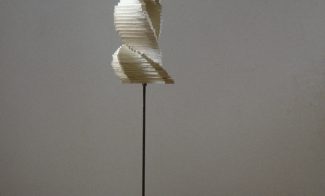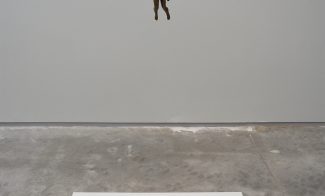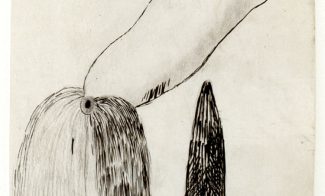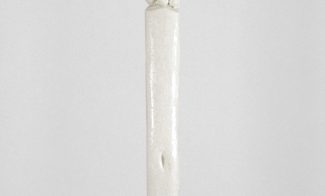For over seventy years, Louise Bourgeois (Born 1911 in Paris; died 2010 in New York) created poignant, cathartic work that explores sexuality, the human form, and traumatic events from her childhood. She is well known for her powerful sculptural work in a variety of media, including marble, bronze, plaster, and fabric.
Janus Fleuri is an evocatively corporeal object made of sleekly polished bronze. Following a period in the late 1950s when Bourgeois withdrew from the art world, she began experimenting with organic and biomorphic forms. She made six versions of Janus in 1968—five in bronze and one in porcelain (which the ICA/Boston also owns)—and recast the motif in 1992. Each piece in this series is delicately suspended by a single wire and is free to spin on its axis. Other hanging sculptures by Bourgeois from this era include the phallic Fillette (1968) with which Bourgeois posed for a famous photographic portrait by Robert Mapplethorpe of 1982.
The title references the Roman god Janus, who was the god of gates, doorways, and beginnings and endings (indeed, the opening month of the year is named after him) and who is often portrayed as having two heads facing in opposite directions. A duality of meaning can often be found in Bourgeois’s work, with forms appearing at once male and female, abstract and representational, menacing and nurturing. In Janus Fleuri, we see mirrored forms drooping in opposite directions from a central point. Bourgeois blended male and female anatomy in many works throughout her career, including the phallic yet breastlike Germinal (1967–92) also in the ICA collection.
